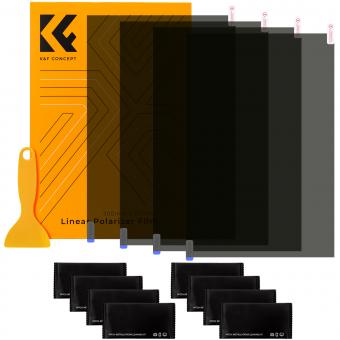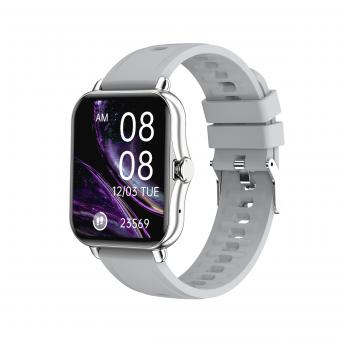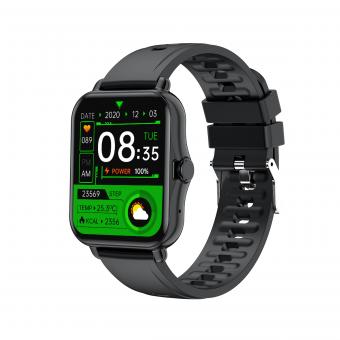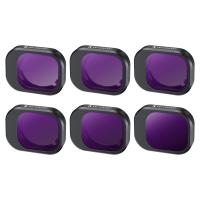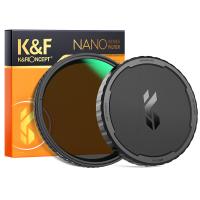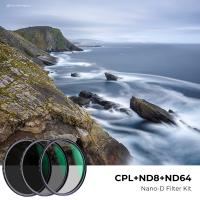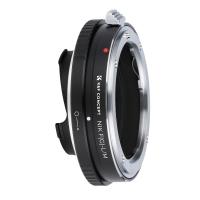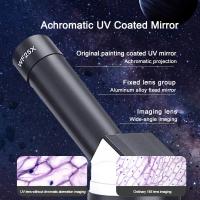How To Identify Red Blood Cells Under Microscope ?
To identify red blood cells under a microscope, prepare a blood smear by placing a small drop of blood on a glass slide. Spread the blood drop into a thin, even layer using another slide. Once the smear is dry, fix it by passing it through a flame or using a fixative solution. Stain the smear with a Romanowsky stain, such as Wright's stain or Giemsa stain. Examine the stained smear under a microscope using the 40x or 100x objective lens. Red blood cells will appear as small, biconcave discs with a pinkish-red color. They lack a nucleus and other organelles, giving them a distinct appearance.
1、 Morphology: Examining the shape and structure of red blood cells.
To identify red blood cells under a microscope, one must focus on their morphology, examining their shape and structure. Red blood cells, also known as erythrocytes, are the most abundant cells in the blood and play a crucial role in transporting oxygen throughout the body.
When observing red blood cells under a microscope, it is important to use a high-power objective lens to achieve a clear view. Red blood cells are typically round and biconcave in shape, resembling a donut with a thinner center. This unique shape increases their surface area, allowing for efficient gas exchange.
The size of red blood cells can vary slightly, but they are generally around 7-8 micrometers in diameter. However, it is important to note that the size and shape of red blood cells can be influenced by various factors, such as age, health conditions, and genetic disorders.
Under normal conditions, red blood cells should appear uniform in size and shape. Any abnormalities in their morphology may indicate certain health conditions. For example, the presence of misshapen or fragmented red blood cells may suggest the presence of a condition called hemolytic anemia.
In recent years, advancements in technology have allowed for more detailed analysis of red blood cells. Automated hematology analyzers can now provide information about the size, shape, and distribution of red blood cells, aiding in the diagnosis and monitoring of various blood disorders.
In conclusion, identifying red blood cells under a microscope involves examining their morphology, focusing on their shape and structure. The round, biconcave shape and uniform size of red blood cells are characteristic features. However, it is important to consider the latest advancements in technology, such as automated analyzers, which provide more detailed information about red blood cell morphology.
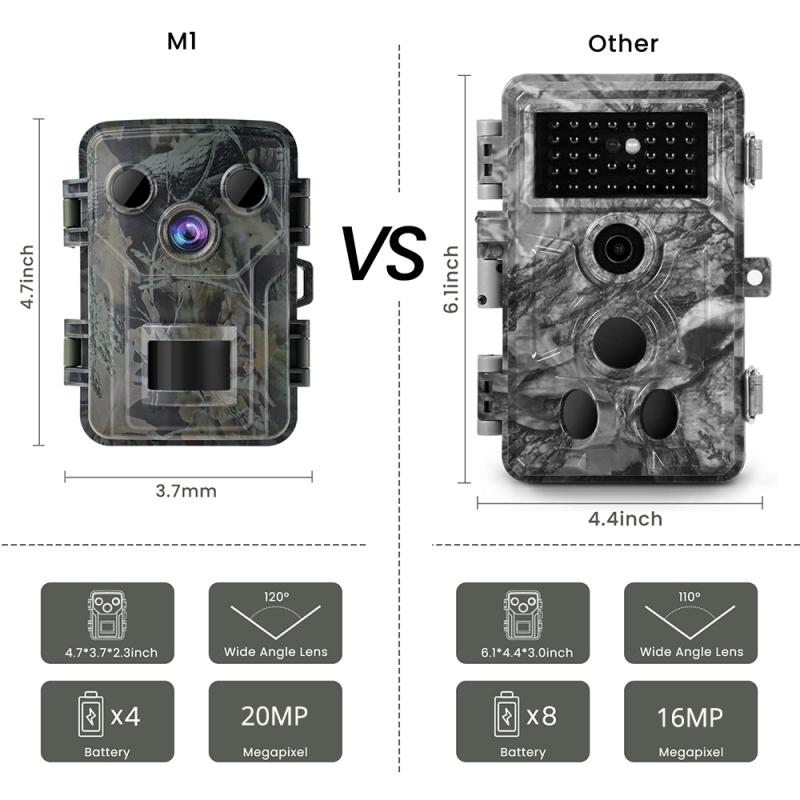
2、 Size: Determining the average diameter of red blood cells.
To identify red blood cells under a microscope, there are several key characteristics to consider. One of the most important factors is the size of the cells. Determining the average diameter of red blood cells can provide valuable information about their health and function.
To measure the size of red blood cells, a technique called microscopy is commonly used. A blood sample is prepared on a slide and observed under a microscope at high magnification. The cells are then measured using a calibrated eyepiece or an image analysis software.
The average diameter of red blood cells in healthy individuals is typically around 6-8 micrometers. However, it is important to note that there can be slight variations in size among individuals and populations. For example, certain medical conditions or genetic factors can lead to abnormal red blood cell sizes.
Recent advancements in technology have allowed for more accurate and automated measurements of red blood cell size. For instance, flow cytometry can provide detailed information about the size distribution of red blood cells in a sample. This technique uses lasers and detectors to measure the cells as they pass through a narrow channel.
Additionally, new imaging techniques such as digital holographic microscopy and quantitative phase imaging have shown promise in providing precise measurements of red blood cell size. These methods utilize advanced algorithms and computational analysis to extract quantitative information from the microscopic images.
In conclusion, identifying red blood cells under a microscope involves determining their size, which can be done through various techniques such as microscopy, flow cytometry, and advanced imaging methods. The average diameter of red blood cells provides important insights into their health and function, and recent advancements in technology have improved the accuracy and efficiency of size measurements.

3、 Staining: Using specific dyes to enhance visibility and identification.
To identify red blood cells under a microscope, staining techniques are commonly used to enhance their visibility and aid in their identification. Staining involves the use of specific dyes that selectively bind to different components of the cells, making them easier to distinguish and study.
One of the most commonly used stains for red blood cells is Wright's stain, which consists of a mixture of eosin and methylene blue. This stain allows for the visualization of both the cytoplasm and the nucleus of the cells. Eosin stains the cytoplasm pink or orange, while methylene blue stains the nucleus blue. This differential staining helps in identifying the characteristic biconcave shape of red blood cells and distinguishing them from other cells.
Another commonly used stain is Giemsa stain, which is particularly useful for identifying certain types of blood cells, such as white blood cells. Giemsa stain also provides a good contrast for red blood cells, allowing for their identification and examination.
In recent years, advancements in staining techniques have been made to improve the identification of red blood cells. For example, immunohistochemical staining methods have been developed to specifically target certain proteins or antigens present on the surface of red blood cells. This allows for the identification of specific subtypes of red blood cells and can be particularly useful in diagnosing certain blood disorders or diseases.
In conclusion, staining techniques, such as Wright's stain and Giemsa stain, are commonly used to identify red blood cells under a microscope. These stains enhance the visibility of the cells and aid in their identification. Advancements in staining techniques, such as immunohistochemical staining, have further improved the identification and characterization of red blood cells.

4、 Hemoglobin content: Assessing the amount of hemoglobin within red blood cells.
To identify red blood cells under a microscope, there are several key characteristics to look for. One of the most important factors is the hemoglobin content within the red blood cells. Hemoglobin is a protein found in red blood cells that carries oxygen throughout the body. Assessing the amount of hemoglobin within red blood cells can provide valuable information about their health and function.
To identify red blood cells and assess their hemoglobin content, follow these steps:
1. Prepare a blood smear: Take a small drop of blood and spread it thinly on a glass slide. Allow it to air dry completely.
2. Stain the blood smear: Use a suitable stain, such as Wright's stain or Giemsa stain, to enhance the visibility of the red blood cells. Follow the staining protocol carefully.
3. Observe under a microscope: Place the stained blood smear on the microscope stage and start with a low magnification objective (e.g., 10x). Locate an area where red blood cells are well-distributed.
4. Identify red blood cells: Red blood cells are typically round, biconcave discs with a pale center. They lack a nucleus and other organelles. Focus on identifying cells that match these characteristics.
5. Assess hemoglobin content: The amount of hemoglobin within red blood cells can be observed by its color intensity. Well-oxygenated red blood cells appear bright red, while those with reduced hemoglobin may appear darker or paler.
6. Quantitative assessment: For a more precise assessment of hemoglobin content, specialized laboratory techniques such as hemoglobin electrophoresis or spectrophotometry can be used.
It is important to note that the latest point of view in assessing red blood cells' hemoglobin content involves more advanced techniques, such as flow cytometry or automated hematology analyzers. These methods provide accurate and quantitative measurements of hemoglobin content, allowing for a more comprehensive analysis of red blood cell health. However, the basic identification and assessment of red blood cells under a microscope remain a fundamental technique in the field of hematology.





